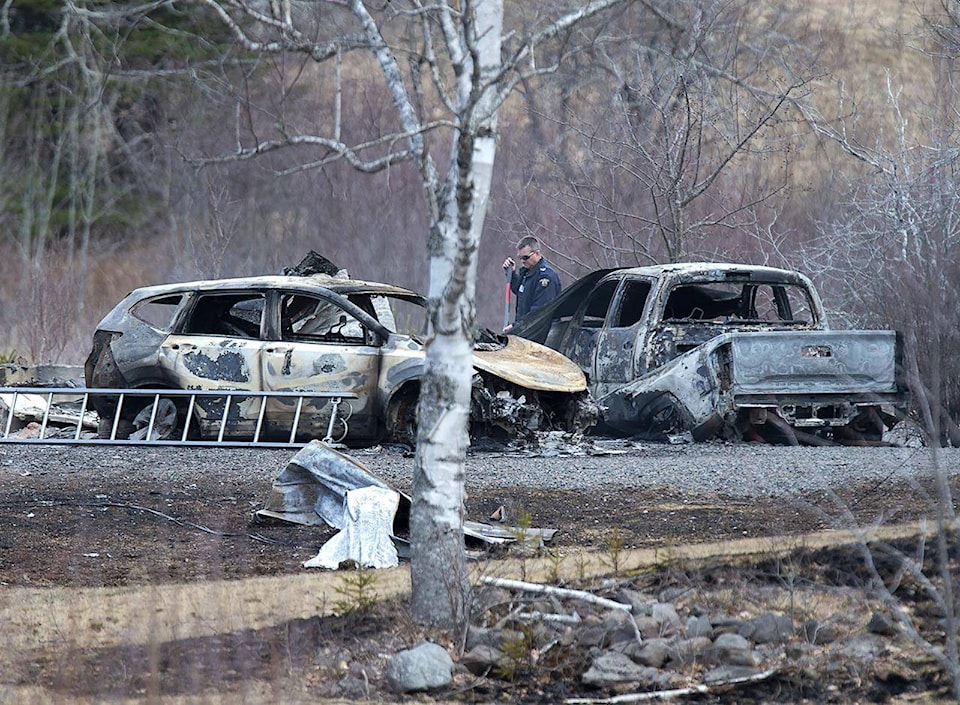HALIFAX — A retired high-ranking Mountie says the investigation into one of Canada’s worst mass killings will tax the resources of the Nova Scotia RCMP.
Pierre-Yves Bourduas, a former deputy commissioner, says nothing in his experience compares to what took place last weekend when 22 people were killed in a rampage by a man before he was shot dead by RCMP on Sunday.
Nova Scotia RCMP Chief Supt. Chris Leather has said the investigation spans 16 crime scenes over a nearly 100-kilometre area of central and northern Nova Scotia, and it will likely be months before it concludes.
Bourduas said in an interview Tuesday that based on his experience, the investigation will “tax to the max” the RCMP’s Nova Scotia division, and they will likely need outside help “in order to be able to move rather swiftly on the investigations.”
Nova Scotia RCMP did not respond to a request about staffing levels to assist with the investigation on Tuesday, and RCMP in neighbouring New Brunswick refused to provide details of its role.
“The New Brunswick RCMP is continuing to support our colleagues in Nova Scotia,” Cpl. Jullie Rogers-Marsh said in an email. “It would be inappropriate for me to discuss our operations and tactics during an ongoing investigation.”
Bourduas, who is now president of an Ottawa-based public safety consulting firm, said while investigators might also reach out to other agencies for help, the national police force with about 32,000 members is well equipped with the expertise and civilian support to handle the investigation.
On Monday, Leather said the public would need to wait to learn of possible motives and a detailed timeline of what happened, adding there was no suspect alive to provide answers. He also said structure fires at five locations have complicated matters.
Bourduas said it all amounts to a lengthy investigation.
“It’s a moving target,” he said. “I think months could be realistic depending on what’s uncovered.”
Bourduas, who was part of the manhunt for serial killer Allan Legere in New Brunswick more than 30 years ago, said each crime scene will have to be secured around the clock until all of the evidence is gathered by identification teams.
“A co-ordinating team will look at all 16 different locations and try to put the puzzle back together to determine the chain of events,” he said.
He said the evidence collected will need to be analyzed, a process that will take time, and statements will be gathered from numerous witnesses and from police officers who were on the ground during the rampage.
Investigators will delve into things such as an initial encounter with the gunman, the 911 call and the deployment of officers during the response.
Bourduas said there will likely also be a deep check of the killer’s online history to help determine his frame of mind if possible and how he acquired the equipment he used.
Police have said Wortman’s use of a mock police cruiser and an RCMP uniform helped him escape detection.
“It’s quite painstaking,” Bourduas said. “It’s a monumental logistical task to conduct this particular type of investigation.”
This report by The Canadian Press was first published April 21, 2020.
Keith Doucette, The Canadian Press
